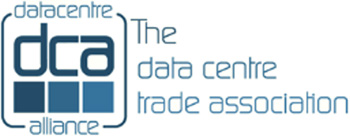GDPR & your privacy.
Your privacy as a member is important to us. Recently, rules surrounding privacy have changed, so we have created this manifest for you to read and accept.
It is not possible for you to be classed as an authentic member of the DCA unless you accept the terms, that includes but is not limited to the GDPR statement below.
Please read the privacy policy here.
Demand for power supply to the Data Centre is not diminishing By Gareth Spinner – Director Noveus
Categories: Articles

The demand for data continues to grow at pace and the perquisite of having power to supply the Data Centre is not diminishing and thus we continue to face the fact that more power is going to be needed. The Data Centre model works very much on the basis that the maximum theoretical capacity must be secured to ensure funding is achieved and that the business model works for any operator; they can’t commit to customers or tenants if they haven’t got an agreement with the network provider.
This is the secure and safe method of operating, however with the changing landscape to meet the requirements of Smart Grid and the Low Carbon Economy the way networks are operated is changing with more push from Regulators to facilitate local energy networks, more low carbon generation and lower more efficient running of the networks. The high level of small generation and potential growth of battery storage is going to require System Operations in real time being taken up by the local Distribution Network Operators balancing loads at Grid substation level rather than all sitting with National Grid for the UK as a whole.
This local balancing and the need for flexible services and potentially Demand Side Management creates a new energy market, where the local System Operator will be seeking to contract with providers of generation and users of power to be flexible with their export and import. Is this something a Data Centre can do? Is willing to do? Or under their service provision to their customers is able to do?
The added challenge for the Data Centre is the cost of energy; the non-commodity aspects are becoming a much larger slice of this and these network and tax charges are difficult to negotiate unless the Data Centre has a different approach. The flexibility option may be a way that the Data Centre can impact its costs but as we know everything has a price.
Overseas it is also not unusual for Datacentres and large consumers of power to enter into arrangements with generators, for some by necessity as the grid is less perfect but better economically and then with batteries as support for peak lopping solutions are found. This is also possible in the UK with the added benefit of grid cost avoidance with private wire connections.
The true panacea would be all capacity being socialised across all users, where the users pay for what they use and network company shuffle the demands to meet all customer needs. The challenge is having a robust network with monitoring and controls to give an absolute comfort to the Data Centre that they can trust the Network Operator to do it, else they will want to retain control and their own 100% back up.
With this huge challenge and global landscape on power, does the DC strategy of N+1 power still stand? Should the N+1 or N+2 be held at data storage level, and thus more thought is required to having more small flexible DC sites with resilience in Data Storage and worry less about Power. A reduced power requirement could deliver huge beneficial impacts on operating costs with no loss in service.
All of the new options also help achieve a much greener energy footprint so that is good ethically.
So, the power landscape is getting more and more interesting.
www.noveusenergy.com info@noveusenergy.com Tel: 020 3011 1785
+ 44 (0)845 873 4587
info@dca-global.org



